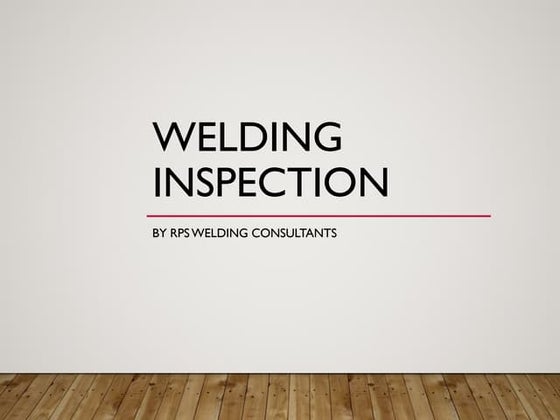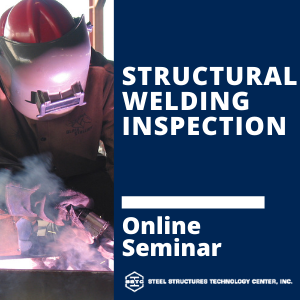How to Guarantee Quality with Welding Inspection Gilbert Arizona: Finest Practices
Exploring the Relevance of Welding Evaluation in Industrial Applications: Safeguarding Versus Failings and Enhancing Durability
Welding evaluation functions as a critical line of protection in industrial applications, guaranteeing the architectural integrity and integrity of welded elements. By methodically identifying flaws such as porosity and insufficient blend, assessments not just prevent failings yet likewise expand the life-span of vital properties. Complying with sector requirements improves both security and functional performance; nevertheless, the effects of neglecting these techniques can be severe. As we check out the diverse benefits of routine inspections, it comes to be noticeable that recognizing these dynamics is not just a matter of compliance yet a critical vital for longevity and danger mitigation (Welding Inspection Gilbert Arizona).
Function of Welding Examination
Welding examination functions as a crucial secure in industrial applications, ensuring that bonded structures meet defined requirements of high quality and safety and security. This process includes an organized examination of welds to verify their stability, strength, and compliance with well established codes and specifications. The function of welding inspection is complex, encompassing both visual evaluations and non-destructive testing techniques, which may include ultrasonic, radiographic, or magnetic bit testing.

Additionally, welding assessment plays an essential role in regulatory conformity. Eventually, the duty of welding inspection is crucial in advertising safety, improving efficiency, and shielding financial investments in commercial infrastructure.
Common Welding Flaws

Among one of the most widespread issues is porosity, identified by tiny gas pockets entraped within the weld steel. This takes place as a result of impurities or improper securing gas, jeopardizing the weld's strength. An additional considerable defect is incomplete blend, where the weld steel stops working to bond correctly with the base product, possibly bring about structural weaknesses.
Splits can additionally create during or after the welding procedure, frequently credited to thermal anxieties or improper air conditioning rates. In addition, damaging, where the base metal is eroded along the weld bead, can weaken the joint and is often brought on by extreme warm input or incorrect technique.
In addition, absence of infiltration happens when the weld metal does not reach the origin of the joint, bring about poor stamina. Recognizing these usual issues is essential for welders and examiners alike to make certain that welded structures meet security and performance requirements, inevitably preventing prospective failures in commercial applications.
Benefits of Normal Evaluations
Routine assessments offer as an essential guard in guaranteeing the reliability and long life of welded structures. These evaluations identify prospective issues and weaknesses that might endanger the integrity of welds, enabling for prompt remediation prior to concerns escalate. By carrying out a structured assessment routine, organizations can considerably reduce the risk of catastrophic failings that may cause expensive downtime, equipment substitute, or even accidents.
In addition, routine evaluations contribute to boosted quality assurance throughout the welding procedure. By sticking to a constant inspection schedule, companies can make certain that their welding methods fulfill well established high quality benchmarks and ideal methods. This not only cultivates a culture of accountability yet also urges continuous enhancement amongst welding personnel.
On top of that, regular assessments promote better maintenance planning. By determining damage early, companies can purposefully schedule replacements and repairs, decreasing interruption to procedures. This positive approach inevitably results in extensive possession lifespan and boosted general performance.
Last but not least, a dedication to regular examinations can enhance a firm's online reputation in the market. Stakeholders and clients significantly value companies that focus Find Out More on security and high quality, thus enhancing trust fund and possibly resulting in boosted organization possibilities.
Sector Requirements and Rules
Complying with market standards and laws is a basic facet of welding examination that enhances the benefits of regular evaluations. These requirements, established by organizations such as the American Welding Society (AWS) and the American Culture of Mechanical Engineers (ASME), supply a framework for ideal techniques in welding procedures, materials, and assessment strategies. Compliance with these policies makes sure that welds fulfill the called for quality and safety and security benchmarks, substantially decreasing the danger of architectural failures.
Regulative bodies like the Occupational Safety And Security and Wellness Management (OSHA) better enforce guidelines that safeguard workers and the atmosphere during welding operations. By complying with these developed criteria, industries can improve the integrity of their structures and parts, ensuring they execute as meant under various functional conditions.
Moreover, adherence to market criteria fosters consistency in quality assurance, facilitating smoother communication among stakeholders and regulative firms. This alignment not only decreases obligation risks yet also enhances the reputation of companies in open markets. Eventually, compliance with welding criteria and regulations is not merely a legal commitment; it is a crucial investment in safety, efficiency, and long-lasting operational success.
Future Trends in Welding Evaluation
As industries proceed to progress, the future of welding assessment is positioned to incorporate sophisticated modern technologies that improve precision and efficiency. Among the most significant patterns is the fostering of automation and robotics in evaluation processes. Automated systems can conduct examinations quickly, decreasing human mistake and raising throughput in manufacturing atmospheres.
In addition, the assimilation of synthetic knowledge (AI) and artificial intelligence algorithms will certainly make it possible for anticipating analytics, permitting real-time analyses and aggressive maintenance (Welding the original source Inspection Gilbert Arizona). By evaluating data from previous inspections, these technologies can recognize patterns that might suggest prospective failures, thereby expanding the life expectancy of bonded parts

In addition, the trend towards digitalization will certainly bring about improved data monitoring systems that facilitate much better monitoring, reporting, and compliance with sector requirements. In recap, the future of welding assessment is characterized by technological advancements that guarantee to substantially enhance reliability, safety, and functional efficiency in various industrial applications.
Verdict
To conclude, welding assessment serves a vital function in making certain the stability and resilience of bonded structures across various commercial applications. By identifying issues such as porosity and incomplete fusion, regular inspections play a substantial duty in risk reduction and high quality assurance. Adherence to sector requirements and regulations further boosts functional safety and security and dependability. As improvements in modern technology remain to advance, the future of welding examination guarantees boosted accuracy and efficiency, ultimately contributing to the long life of crucial frameworks.
Welding inspection serves as a critical line of protection in industrial applications, making sure the structural honesty and reliability of bonded components.Welding examination serves as an essential protect in industrial applications, making sure that welded frameworks meet defined requirements of high quality and security more information - Welding Inspection Gilbert Arizona. Eventually, the duty of welding inspection is essential in promoting safety, improving efficiency, and shielding investments in commercial facilities
These requirements, established by organizations such as the American Welding Society (AWS) and the American Culture of Mechanical Designers (ASME), provide a structure for ideal techniques in welding processes, materials, and assessment strategies.In conclusion, welding evaluation offers a vital function in making certain the integrity and durability of bonded frameworks across numerous industrial applications.